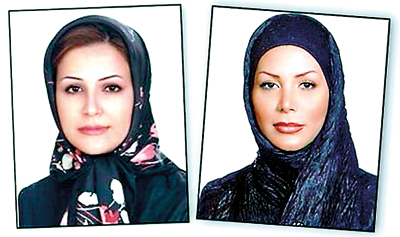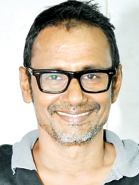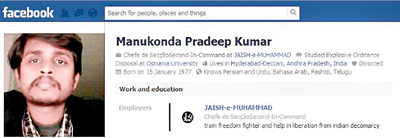Sunday Times 2
Neda Soltani: ‘The media mix-up that ruined my life’
View(s):In June 2009, a woman was shot dead in a demonstration in Tehran. Neda Agha-Soltan became the face of the Iranian protest movement – except that it was not her face to begin with, but the face of university teacher Neda Soltani. Here, Neda Soltani tells her disturbing story.
On 21 June 2009, I went to my office early in the morning and opened my email account to find 67 Facebook “friend requests”. Over the next few hours I received another 300 requests.

Neda Soltani (left) and Neda Agha-Soltan (right)
I didn’t know then that my photo and name had appeared on websites and TV broadcasts across the world.
Students at the university where I worked were holding sit-ins and protests on campus, and since I was on the administrative board I could not go home at the usual time. I was still at work that evening when I received an email from someone I didn’t know.
In this email I read that a girl called Neda Soltani – which is my name – had been killed on the streets of Tehran the day before. Since no information had been made available about her, this person was trying to find her on Facebook through a process of elimination – ruling out the other Neda Soltanis on the site.
When I got home, I found I had received calls from students, colleagues, friends and relatives saying: “We saw you on CNN, we saw you on Fox News, we saw you on Farsi channels, Iranian channels.”
The international media was using a picture of me taken from my Facebook account to accompany the footage of Neda Agha-Soltan’s death.
I confirmed as friends everybody who had added me on Facebook – there were several international journalists and bloggers among them – and explained that this was a mistake, I was not the person who had been shot dead the day before.
Some bloggers posted updates, but the journalists who received my message did not react – my picture continued to be used.
I received a lot of hate messages. People accused me of being an agent of the Islamic Republic of Iran, who had gained access to Neda’s Facebook account and wished to distort the face of their hero, this symbol of resistance and opposition.
Agha-Soltan’s family did release authentic photos of her. But you can imagine what a terrible state the family were in and it took them quite some time – it was something like 48 hours before they released the first photos.
By that time my photo had been well established and identified as the face of the martyr and of the whole opposition movement, and the media kept using it side-by-side with the images of the death of the real martyr, the real Neda.
It was just ridiculous to see how such a huge mistake had come out of a simple photo on Facebook.
But it was also very shocking to see my face side-by-side with the video of Agha-Soltan. When I saw people all over the world demonstrating with my photo, putting up shrines, lighting candles – it was just like sitting there and watching my own funeral.
Of course, I knew that it could have been me – I could well have suffered the fate of that poor, innocent woman. The Iranian regime felt harassed by the attention Agha-Soltan’s death had brought on them from abroad. Within three days, Ministry of Intelligence agents came to my home and summoned me for a meeting. They wanted to find a way to wash their hands of the blood of Neda Agha-Soltan. My name and my face were the only part of the puzzle that they could use to their advantage.
They wanted to imply that Neda Agha-Soltan’s death had not taken place but was a piece of propaganda against Iran, and that the photo had not been taken from my Facebook page but had been released by the European Union. They accused the European Union, the United Kingdom and of course the US.
I refused to co-operate with them.
When they understood that I wasn’t willing to play my part they turned against me. I remember one of the agents telling me: “You as a single individual do not count for us – right now, the national security of our Islamic fatherland is in question.”
My situation was getting very complicated. Many friends and colleagues decided that being in contact with me could endanger them as well. My boyfriend was one of these people – I lost contact with him.
Other friends tried to get me to focus on what I should do. They told me: “You need a Plan B.” But I didn’t listen to them, I was so distressed and afraid. I simply couldn’t believe a photo could ruin my whole life.
The last time the agents came to my house they refused to let me take anybody or anything with me and they took me away.
They accused me of betraying the national security of my country. I was charged with being a spy for the CIA and told to sign a confession. I knew very well that such an accusation could end in a death sentence for me in Iran.
It was a surreal, Kafkaesque experience. The whole thing happened in a matter of 12 days. In less than two weeks I had gone from being a professor of English literature, leading a very normal life, to a person who had to flee her homeland.
My friends arranged it. With their help, I bribed a security official at the airport and left Iran. I had to pay 11,000 euros ($14,000 or £9,000).
I went first to Turkey, and it was there that I was introduced to the idea of seeking political asylum. I then went to Greece and in the end, Germany. The German government sent me to a refugee camp where I was provided with shelter and food, and went on to grant my request for asylum.
To live the life of a refugee is to be a leaf in the air. You just hang in the air with no sense of belonging. You have been uprooted and you are not allowed to go back to where you belong.
Looking back, the people I am most angry with are the Western media. They kept using my photo even though they knew it was not a picture of the real victim in that tragic video. They knowingly exposed me to extreme danger.
I can never be the person that I was before these things happened. I’m still suffering from depression, I am still suffering from nightmares.
However, I have decided to fight for a new, good life – what I believe I as a human being deserve. I am optimistic that with the passage of time my situation will get better.
(Courtesy BBC)
Follow @timesonlinelk
comments powered by Disqus




















